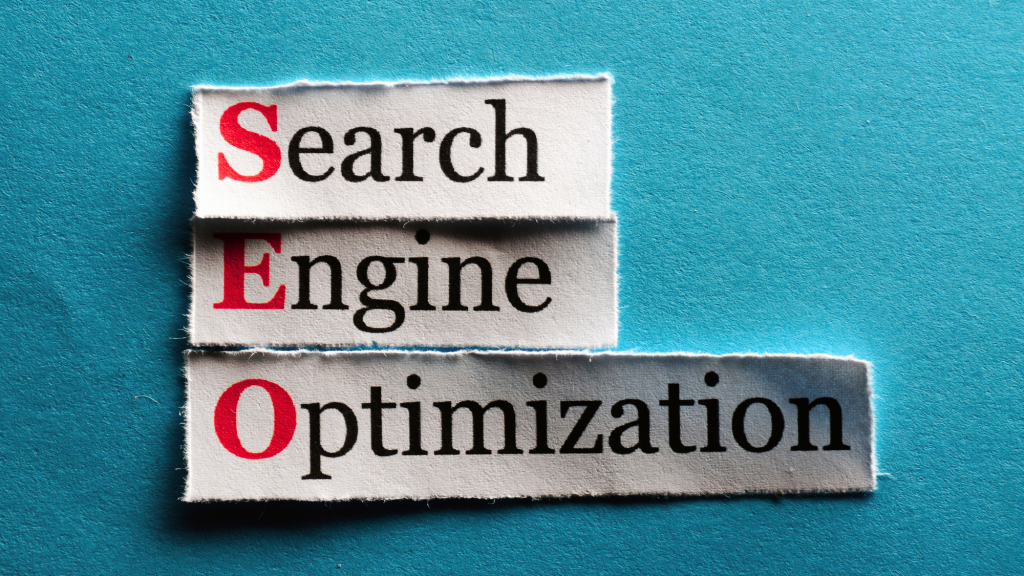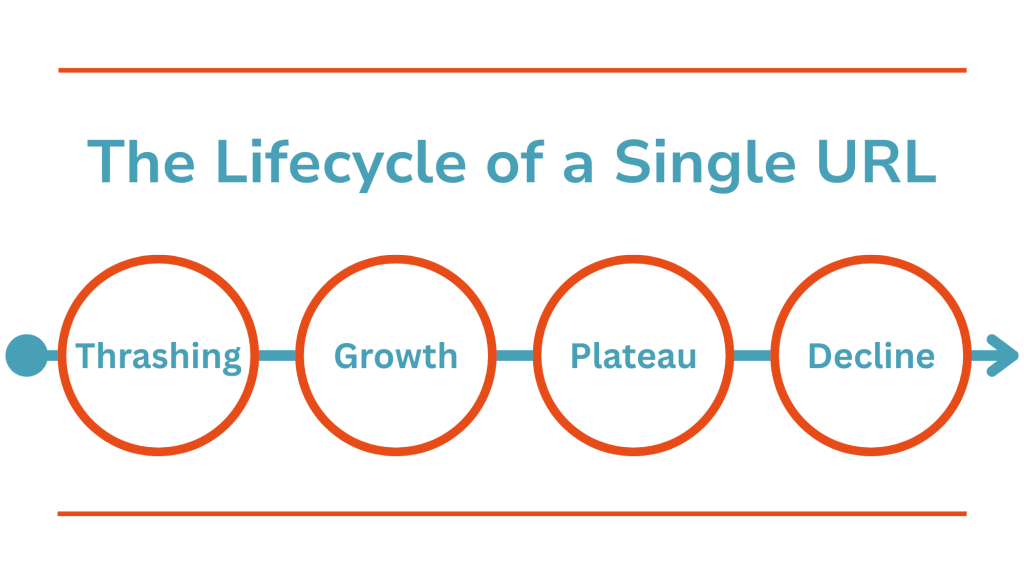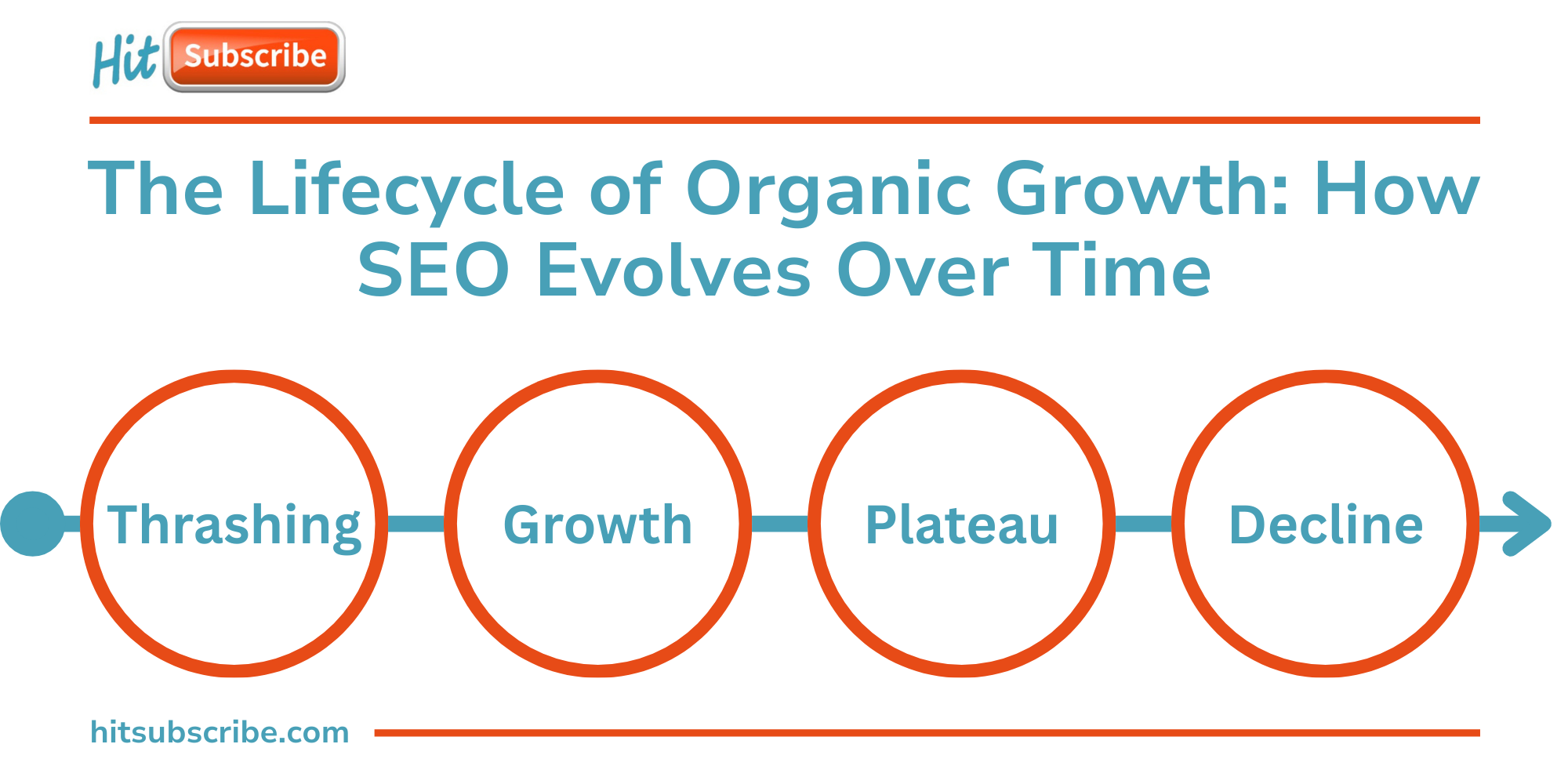You publish a new blog post, check your traffic a week later, and see no growth. Or worse—your metrics are down. What’s going on?
SEO is rarely a straight line. If you’ve ever stared at your analytics dashboard and noticed growth slowing, leveling off, or even declining, it’s easy to panic. But traffic plateaus and gradual declines are actually normal for any mature content program. It’s rarely because Google “hates” your site or has penalized you.
I’ve spent years studying how organic traffic grows, even documenting experiments in my book SEO for Non-Scumbags. That experience has shown me that understanding the nuances of traffic trends, algorithm effects, and emerging AI-driven search behavior is key to maintaining a healthy, sustainable SEO strategy.
In this post, we’ll explore why traffic naturally rises, stalls, and dips, debunk the myths that cause panic, and share practical strategies to keep your SEO growth on track.
Why SEO Is Far From Dead
 There’s an elephant in the room when it comes to search engines and emerging technologies: why does SEO still matter?
There’s an elephant in the room when it comes to search engines and emerging technologies: why does SEO still matter?
Some claim SEO is “dying,” but history shows that technologies often linger long after they’re considered obsolete. Take mainframes, for example. Even in 2016, years after they were deemed “dead,” they were still powering major banks and government agencies.
SEO isn’t going away—it’s evolving. Today, it remains one of the most cost-effective and predictable ways to drive traffic. At its core, SEO is simple: it’s about questions and answers. Keywords and URLs are the tools that provide solutions to people’s queries.
People will always have questions, and they will always seek answers. The way those answers are delivered may change, but the fundamental need for relevant, helpful content persists.
5 SEO Traffic Myths That Kill Growth
Before diving into growth strategies, let’s debunk a few myths I hear frequently:
1. “Our traffic is declining because we haven’t published lately.”
Not exactly. Organic traffic isn’t immediate. It often takes months for new content (or lack of it) to show an impact. That long lead time makes it easy to misinterpret what’s really happening.
2. “The algorithm hates us.”
Almost never true. It’s rare for traffic drops to be the result of algorithmic punishment. More often, the cause is historical decisions about content cadence, technical setup, or market shifts.
3. “We have enough traffic, so we can stop publishing.”
Traffic isn’t static. Without new content, even high-performing sites eventually stagnate and decline.
4. “Our traffic has leveled off, so we can relax.”
Plateaus are natural, but they’re not permanent. Without a plan, they often give way to gradual decline.
5. “SEO consultants blame site performance for everything.”
Site speed and performance matter, but they’re rarely the sole culprit. Be wary of oversimplified diagnoses.
These myths are easy to fall back on because they offer simple explanations for complex problems. But traffic trends are rarely the result of a single factor. Recognizing these misconceptions for what they are is the first step toward diagnosing the real causes of plateaus or declines—and ultimately building a more resilient SEO strategy.
Once you set aside the myths, what’s left is the real engine of growth: the performance of individual URLs. Let’s zoom in on one to see how traffic evolves over time.
The Lifecycle of a Single URL
 Let’s look at an individual URL targeting a primary keyword. Here’s the typical life cycle over several years:
Let’s look at an individual URL targeting a primary keyword. Here’s the typical life cycle over several years:
-
Thrashing Phase
Immediately after publishing, the search engine indexes your content, but visibility is sporadic. One day your post might rank ninth, the next day 80th, then off the first 100 results entirely, then back to 12th. This phase is unpredictable and can last several months. I call it “thrashing.” Even if you’ve optimized the URL and chosen a winnable keyword, you can’t rely on stable traffic yet.
-
Growth Phase
After a few months (often 4–6), the URL begins to settle on page one, typically lower page one. Traffic starts to become more predictable and steadily increases. This upward trend usually lasts several months—often between months six and fifteen—depending on the URL and site.
-
Plateau Phase
Traffic reaches equilibrium. The URL ranks for all the keywords it can realistically capture, competitors may catch up, and growth slows. Traffic levels off and holds steady.
-
Long-Tail Decline
Eventually, interest in the topic diminishes. Traffic gradually declines over the course of years. Refreshing content can slow this decline and extend the plateau, but some topics naturally fade over time—for example, hardly anyone searches for Visual Basic 6 anymore.
In short, the life cycle of a site is the sum of its URLs. People often think of traffic as a property of the site as a whole, but really, the classic “hockey stick” growth curve is just the aggregate of individual URL performance over time. Each page you publish contributes to the overall trajectory.
Google doesn’t like or dislike your site as a whole; it evaluates each URL individually, and the aggregate of those URLs determines your site-level traffic trends.
So, site growth is really aggregate URL growth. This connects back to an earlier principle: more URLs earlier is better. Publishing more URLs sooner starts the “clock” earlier, incurs the thrashing period earlier, and gets you to the growth phase (the fun part) sooner. Lots of URLs properly targeting keywords is roughly 90% of the game.
At its core, SEO is fundamentally about Q&A. Figure out what questions people are asking and answer them on a site that’s pleasant to visit. Do that in good faith, and you’re most of the way there.
What Else Fuels Growth Beyond Content
Backlinks and Domain Authority
Backlinks and domain authority also influence growth. Domain Authority, a Moz metric, reflects how much search engines “trust” your site. Backlinks are like votes of confidence from other websites. Linking to Wikipedia, for example, tells search engines you see it as authoritative. The more high-quality sites that link to you, the stronger your authority, originally called PageRank.
In B2B, some of this happens naturally through PR, content, and business profiles. You can speed it up by submitting to directories like G2, Capterra, or industry indexes. Just avoid shady link schemes, since they’ll hurt more than help. Backlinks matter, but not as much as answering user questions well.
 Technical SEO
Technical SEO
Technical SEO matters too, especially early on. But don’t stress over every tiny warning from tools like Screaming Frog. The goal is simple: make sure search engines can crawl and index your site, and avoid major errors that block visibility.
Big technical problems usually only show up on massive sites with thousands of pages. For new sites, publishing useful content is far more important than running perfect audits.
Content Quality (SEO’s Version)
Content quality matters, but in SEO it’s defined differently than in PR or communications. Google isn’t grading your writing style. It’s watching how users respond.
From an SEO perspective, quality comes down to two things:
- Does your content answer the searcher’s question?
- Do users stay, read, and leave satisfied?
Helpful, accessible content almost always beats polished but irrelevant copy. Brand perception, tone, and accuracy matter to your business, but for SEO, quality is all about delivering answers.
Key Principles for Lasting SEO Success
 SEO is like retirement savings: the earlier you start, the better. Results often come slowly, and what you see in traffic trends today usually reflects decisions made months—or even years—ago, not last week’s actions. The main exception is if you’ve unpublished large portions of your site, which can have an immediate effect.
SEO is like retirement savings: the earlier you start, the better. Results often come slowly, and what you see in traffic trends today usually reflects decisions made months—or even years—ago, not last week’s actions. The main exception is if you’ve unpublished large portions of your site, which can have an immediate effect.
Philosophically, SEO is simple: keywords are questions people are asking, and your URLs are the answers. By targeting the right questions and providing helpful content, you set the foundation for sustainable growth.
Here are some practical principles to keep in mind:
-
Eliminate Technical Blockers
Ensure your site is crawlable and indexable. Avoid catastrophic errors that could prevent your site from being found, but don’t obsess over minor issues reported by tools like Screaming Frog.
-
Promote Your Brand Naturally
PR, business activities, and organic content creation generate backlinks over time. You don’t need to chase every link opportunity; your normal business activities will support SEO growth.
-
Identify Relevant Questions and Winnable Keywords
Target keywords that are achievable early on. Avoid highly saturated terms and prioritize those where you can gain traction quickly.
-
Produce Content Early and Often
Ship content consistently. Early-stage sites benefit more from quantity and coverage than perfection. You can revisit and improve URLs later, but bias toward producing content now.
For example, in a previous experiment, we created a bare-bones WordPress site with zero backlinks, no promotion, and no social media. We targeted long-tail, fully formed questions—even ones with zero search volume, like “What do programmers wear to work?”
The result was a classic hockey stick traffic graph. Producing URLs that answer questions—even without promotion—can still drive meaningful growth.
 Wrapping Up
Wrapping Up
In the end, organic growth is not a sprint, it is a marathon.
Understanding the lifecycle of SEO, separating myths from reality, and embracing the slow, compounding nature of traffic gains will help you build a strategy that endures. Algorithms will evolve, search behaviors will shift, and new technologies will emerge, but the core principle remains the same: create content that answers real questions for real people.
By keeping patience, consistency, and relevance at the center of your approach, you will not only maintain traffic, you will set the foundation for sustainable, long-term growth.
If you’re wondering what to do when growth slows down, stay with me. In the next post, we’ll dig into why plateaus happen, how to separate signal from noise in your analytics, and the practical steps you can take to get growth back on track.
To learn more and get personalized guidance, drop us a line. We’d be happy to answer your questions and share insights.
Additional Reading
Thanks for reading! This post is the first in our three-part series on organic traffic. If you’d like to continue, check out the next two posts here:
- Post 2: Diagnosing Plateaus and Declines in Organic Traffic: A Step-by-Step Guide
- Post 3: How Is AI Changing Organic Traffic?
Our CEO, Erik, hosted a webinar on this topic, and we used its transcript with ChatGPT to create this blog post.




